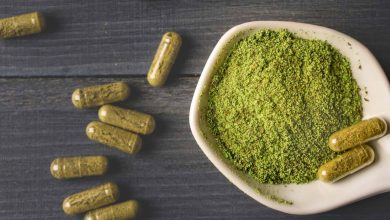Health
Chromatographic Fingerprinting in Herbs for Quality Control

In India herbal medicines have been used for several thousand years to treat and prevent illnesses. Today also there is a growing interest in herbal products because of their natural origin. In order to ensure quality control of herbal products, fingerprinting of herbs in testing laboratories has become an important process. Chromatographic fingerprinting techniques are widely used because they can which can help to
- identify closely related plant species
- screen for most active compounds
- detect adulterations
- control the extraction process
- provide quantitative and qualitative data
- study the quality of a finished product
Importance of Chromatographic Fingerprinting
Chromatographic fingerprinting helps in the accurate and objective identification of the components in herbs and the overall effectiveness of various herbs. Pharmaceutical testing labs use chromatographic fingerprinting to identify the most active compounds among the several compounds that could be present in the herbs. It is considered to be one of the most important and universally acceptable approaches used for quality evaluationof herbs because it systematically characterises a host of complex matrixes with a high degree or reliability. It is a proven method and accepted by the WHO to evaluate the authenticity, superiority and stability of herbal materials. In other words chromatographic fingerprinting helps to standardize raw materials used in herbal products.
Using chromatographic fingerprinting

Chromatographic fingerprinting methods are used by testing labs in two stages of the manufacture of the herbal products. In the first stage fingerprinting is carried out for each of the individual herbs that may go into making any herbal formulation. The herbs are identified through the characteristic peaks that chromatographic systems produce. Simultaneously the major active ingredients present in these herbs are quantified so that a suitable and effective herbal formulation may be prepared. During the manufacturing stage, even if one of the herbs is absent then it will be noticed as the characteristic peaks of that herb will be missing in the chromatographic fingerprint.
Chromatographic fingerprints also ensure that all the herbs claimed in the herbal formulation are indeed present. This way the label claim is considered to be verified as all claimed herbs will be present in the formulation. In other words fingerprinting is considered a comprehensive method used for authentication of purity and standardising of herbal products. The fingerprinting should be specific and should be reproducible and some of the methods used by pharmaceutical testing laboratories are as follows Thin Layer Chromatography (TLC) is used mentioned on pharmacopoeia monographs and is used to separate compounds for authentication.
Column Chromatography (CC) is also used to separate compounds but here it is used to also collect them High-performance liquid chromatography (HPLC) is also used for authentication and analysis of herbal materials. It is widely used in testing labs to
- determine purity
- compare raw material suppliers
- determine any decrease in actives
- test shelf life of nutraceuticals and dietary supplements
- verify the nutritional label of a herbal product
High Performance Thin Layer Chromatography (HPTLC) fingerprinting is used by pharmaceutical and herbal testing labs to detect adulterants in herbal materials.






